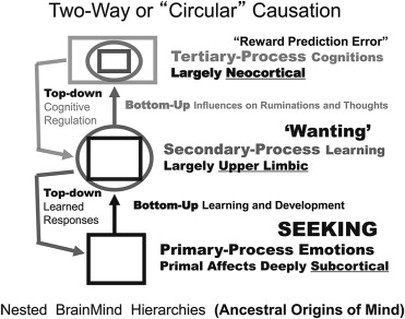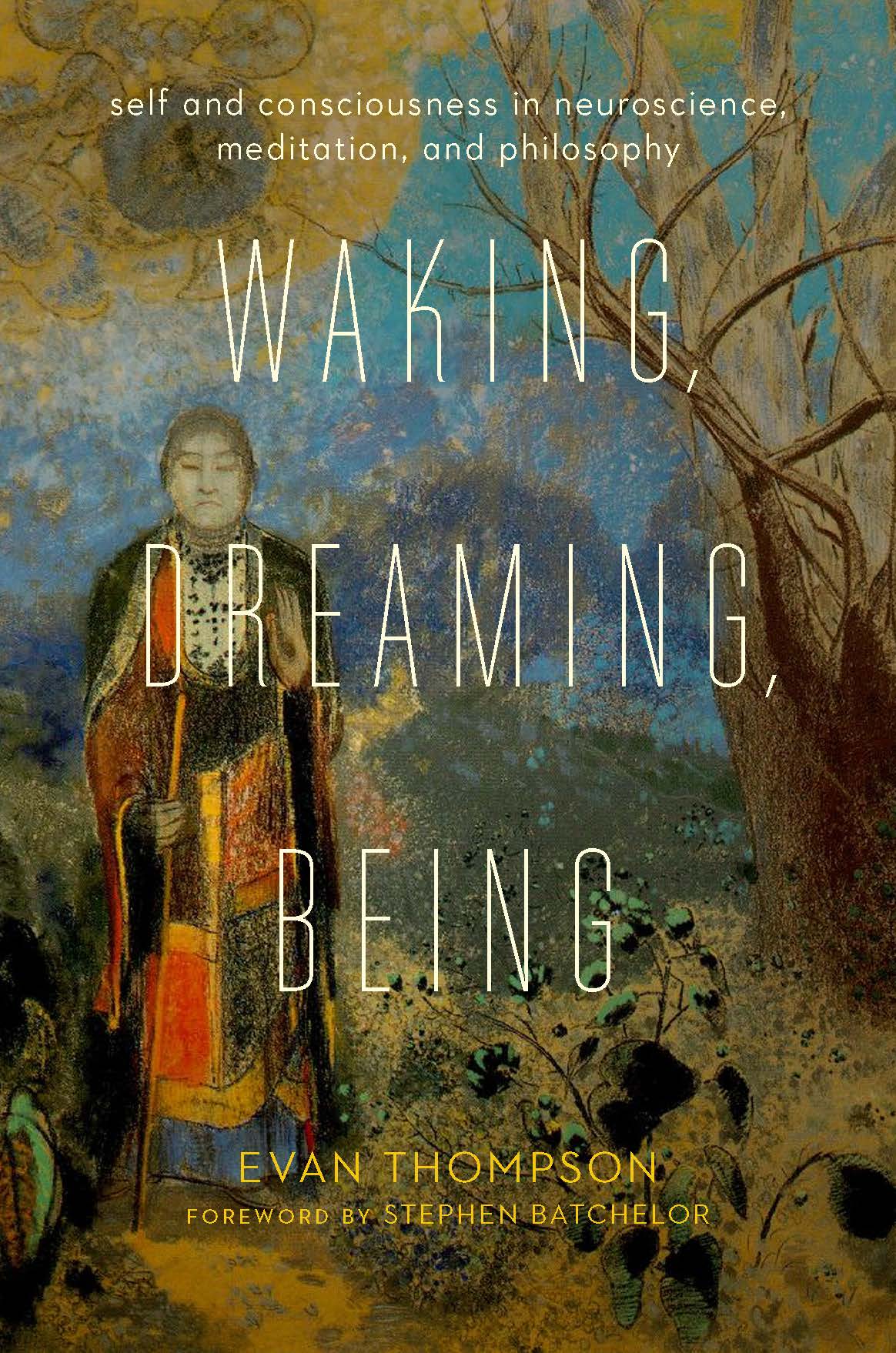Here are some of the best books I have been exposed to this year. Obviously, I cannot read everything, so this is a partial list at best. They are listed in alphabetical order. Descriptive text is from the publisher's blurb on Amazon.
A few of these books warrant the RECOMMENDED READ classification.
Consciousness: Theories in Neuroscience and Philosophy of Mind
Andrea Eugenio Cavanna and Andrea Nani
This book reviews some of the most important scientific and philosophical theories concerning the nature of mind and consciousness. Current theories on the mind-body problem and the neural correlates of consciousness are presented through a series of biographical sketches of the most influential thinkers across the fields of philosophy of mind, psychology and neuroscience. The book is divided into two parts: the first is dedicated to philosophers of mind and the second, to neuroscientists/experimental psychologists. Each part comprises twenty short chapters, with each chapter being dedicated to one author. A brief introduction is given on his or her life and most important works and influences. The most influential theory/ies developed by each author are then carefully explained and examined with the aim of scrutinizing the strengths and weaknesses of the different approaches to the nature of consciousness.
Enactive Cognition at the Edge of Sense-Making: Making Sense of Non-Sense
Massimiliano Cappuccio and Tom Froese, Editors
The enactive approach is a growing movement in cognitive science that replaces the classical computer metaphor of the mind with an emphasis on biological embodiment and social interaction as the sources of our goals and concerns. Mind is viewed as an activity of making sense in embodied interaction with our world. However, if mind is essentially a concrete activity of sense-making, how do we account for the more typically human forms of cognition, including those involving the abstract and the patently nonsensical? To address this crucial challenge, this collection brings together new contributions from the sciences of the mind that draw on a wide variety of disciplines, including psychopathology, phenomenology, primatology, gender studies, quantum physics, immune biology, anthropology, philosophy of mind, and linguistics. This book is required reading for anyone who is interested in how the latest scientific insights are changing how we think about the human mind and its limits.
The Escape of the Mind
Howard Rachlin
The Escape of the Mind is part of a current movement in psychology and philosophy of mind that calls into question what is perhaps our most basic, most cherished, and universally accepted belief--that our minds are inside of our bodies. Howard Rachlin adopts the counterintuitive position that our minds, conscious and unconscious, lie not where our firmest (yet unsupported) introspections tell us they are, but in how we actually behave over the long run. Perhaps paradoxically, the book argues that our introspections, no matter how positive we are about them, tell us absolutely nothing about our minds. The name of the present version of this approach to the mind is "teleological behaviorism."
The approaches of teleological behaviorism will be useful in the science of individual behavior for developing methods of self-control and in the science of social behavior for developing social cooperation. Without in any way denigrating the many contributions of neuroscience to human welfare, The Escape of the Mind argues that neuroscience, like introspection, is not a royal road to the understanding of the mind. Where then should we look to explain a present act that is clearly caused by the mind? Teleological behaviorism says to look not in the spatial recesses of the nervous system (not to the mechanism underlying the act) but in the temporal recesses of past and future overt behavior (to the pattern of which the act is a part).
But scientific usefulness is not the only reason for adopting teleological behaviorism. The final two chapters on IBM's computer, Watson (how it deviates from humanity and how it would have to be altered to make it human), and on shaping a coherent self, provide a framework for a secular morality based on teleological behaviorism.
The Hidden Agenda of the Political Mind: How Self- Interest Shapes Our Opinions and Why We Won’t Admit It
Jason Weeden and Robert Kurzban
When it comes to politics, we often perceive our own beliefs as fair and socially beneficial, while seeing opposing views as merely self-serving. But in fact most political views are governed by self-interest, even if we usually don't realize it. Challenging our fiercely held notions about what motivates us politically, this book explores how self-interest divides the public on a host of hot-button issues, from abortion and the legalization of marijuana to same-sex marriage, immigration, affirmative action, and income redistribution.
Expanding the notion of interests beyond simple economics, Jason Weeden and Robert Kurzban look at how people's interests clash when it comes to their sex lives, social status, family, and friends. Drawing on a wealth of data, they demonstrate how different groups form distinctive bundles of political positions that often stray far from what we typically think of as liberal or conservative. They show how we engage in unconscious rationalization to justify our political positions, portraying our own views as wise, benevolent, and principled while casting our opponents' views as thoughtless and greedy.
While many books on politics seek to provide partisans with new ways to feel good about their own side, The Hidden Agenda of the Political Mind illuminates the hidden drivers of our politics, even if it's a picture neither side will find flattering.
Interdisciplinary Perspectives on Consciousness and the Self
Sangeetha Menon, Anindya Sinha, B.V. Sreekantan, Editors
This volume is a collection of 23 essays that contribute to the emerging discipline of consciousness studies with particular focus on the concept of the self. The essays together argue that to understand consciousness is to understand the self that beholds consciousness. Two broad issues are addressed in the volume: the place of the self in the lives of humans and nonhuman primates; and the interrelations between the self and consciousness, which contribute to the understanding of cognitive functions, awareness, free will, nature of reality, and the complex experiential and behavioural attributes of consciousness. The book presents cutting-edge and original work from well-known authors and scholars of philosophy, psychiatry, behavioural sciences and physics. This is a pioneering attempt to present to the reader multiple ways of conceptualizing and thus understanding the relation between consciousness and self in a nuanced manner.
Living with a Wild God: A Nonbeliever's Search for the Truth about Everything
Barbara Ehrenreich
RECOMMENDED READ.
From the New York Times bestselling author of Nickel and Dimed comes a brave, frank, and exquisitely written memoir that will change the way you see the world.
Barbara Ehrenreich is one of the most important thinkers of our time. Educated as a scientist, she is an author, journalist, activist, and advocate for social justice. In LIVING WITH A WILD GOD, she recounts her quest-beginning in childhood-to find "the Truth" about the universe and everything else: What's really going on? Why are we here? In middle age, she rediscovered the journal she had kept during her tumultuous adolescence, which records an event so strange, so cataclysmic, that she had never, in all the intervening years, written or spoken about it to anyone. It was the kind of event that people call a "mystical experience"-and, to a steadfast atheist and rationalist, nothing less than shattering.
In LIVING WITH A WILD GOD, Ehrenreich reconstructs her childhood mission, bringing an older woman's wry and erudite perspective to a young girl's impassioned obsession with the questions that, at one point or another, torment us all. The result is both deeply personal and cosmically sweeping-a searing memoir and a profound reflection on science, religion, and the human condition. With her signature combination of intellectual rigor and uninhibited imagination, Ehrenreich offers a true literary achievement-a work that has the power not only to entertain but amaze.
Macrocognition: A Theory of Distributed Minds and Collective Intentionality
Bryce Huebner
We live in an age of scientific collaboration, popular uprisings, failing political parties, and increasing corporate power. Many of these kinds of collective action derive from the decisions of intelligent and powerful leaders, and many others emerge as a result of the aggregation of individual interests. But genuinely collective mentality remains a seductive possibility.
This book develops a novel approach to distributed cognition and collective intentionality. It argues that genuine cognition requires the capacity to engage in flexible goal-directed behavior, and that this requires specialized representational systems that are integrated in a way that yields fluid and skillful coping with environmental contingencies. In line with this argument, the book claims that collective mentality should be posited where and only where specialized subroutines are integrated to yields goal-directed behavior that is sensitive to the concerns that are relevant to a group as such. Unlike traditional claims about collective intentionality, this approach reveals that there are many kinds of collective minds: some groups have cognitive capacities that are more like those that we find in honeybees or cats than they are like those that we find in people. Indeed, groups are unlikely to be "believers" in the fullest sense of the term, and understanding why this is the case sheds new light on questions about collective intentionality and collective responsibility.
Making Minds: How Theory of Mind Develops
Henry M. Wellman
Developmental psychologists coined the term "theory of mind" to describe
how we understand our shifting mental states in daily life. Over the
past twenty years researchers have provided rich, provocative data
showing that from an early age, children develop a sophisticated and
consistent "theory of mind" by attributing their desires, beliefs, and
emotions to themselves and to others. Remarkably, infants barely a few
months old are able to attend closely to other humans; two-year-olds can
articulate the desires and feelings of others and comfort those in
distress; and three- and four-year-olds can talk about thoughts
abstractly and engage in lies and trickery.
This book provides a deeper examination of how "theory of mind" develops. Building on his pioneering research in The Child's Theory of Mind
(1990), Henry M. Wellman reports on all that we have learned in the
past twenty years with chapters on evolution and the brain bases of
theory of mind, and updated explanations of theory theory and later
theoretical developments, including how children conceive of
extraordinary minds such as those belonging to superheroes or
supernatural beings. Engaging and accessibly written, Wellman's work
will appeal especially to scholars and students working in psychology,
philosophy, cultural studies, and social cognition.
Mind, Language, and Subjectivity: Minimal Content and the Theory of Thought
Nicholas Georgalis
In this monograph Nicholas Georgalis further develops his important work on minimal content, recasting and providing novel solutions to several of the fundamental problems faced by philosophers of language. His theory defends and explicates the importance of ‘thought-tokens’ and minimal content and their many-to-one relation to linguistic meaning, challenging both ‘externalist’ accounts of thought and the solutions to philosophical problems of language they inspire. The concepts of idiolect, use, and statement made are critically discussed, and a classification of kinds of utterances is developed to facilitate the latter. This is an important text for those interested in current theories and debates on philosophy of mind, philosophy of language, and their points of intersection.
Perspectives on Social Ontology and Social Cognition
Mattia Gallotti and John Michael, Editors
Perspectives on Social Ontology and Social Cognition brings together contributions discussing issues arising from theoretical and empirical research on social ontology and social cognition. It is the first comprehensive interdisciplinary collection in this rapidly expanding area. The contributors draw upon their diverse backgrounds in philosophy, cognitive science, behavioral economics, sociology of science and anthropology.
Based largely on contributions to the first Aarhus-Paris conference held at the University of Aarhus in June 2012, the book addresses such questions as: If the reference of concepts like money is fixed by collective acceptance, does it depend on mechanisms that are distinct from those which contribute to understanding the reference of concepts of other kinds of entity? What psychological and neural mechanisms, if any, are involved in the constitution, persistence and recognition of social facts?
The editors’ introduction considers strands of research that have gained increasing importance in explaining the cognitive foundations of acts of sociality, for example, the theory that humans are predisposed and motivated to engage in joint action with con-specifics thanks to mechanisms that enable them to share others’ mental states. The book also presents a commentary written by John Searle for this volume and an interview in which the editors invite Searle to respond to the various questions raised in the introduction and by the other contributors.
The Routledge Handbook of Embodied Cognition
Lawrence Shapiro, Editor
Embodied cognition is one of the foremost areas of study and research in philosophy of mind, philosophy of psychology and cognitive science. The Routledge Handbook of Embodied Cognition is an outstanding guide and reference source to the key topics and debates in this exciting subject and essential reading for any student and scholar of philosophy of mind and cognitive science.
Comprising over thirty chapters by a team of international contributors, the Handbook is divided into six parts:
- Historical underpinnings
- Perspectives on embodied cognition
- Applied embodied cognition: perception, language, and reasoning
- Applied embodied cognition: social and moral cognition and emotion
- Applied embodied cognition: memory, attention, and group cognition
- Meta-topics.
The early chapters of the Handbook cover empirical and philosophical foundations of embodied cognition, focusing on Gibsonian and phenomenological approaches. Subsequent chapters cover additional, important themes common to work in embodied cognition, including embedded, extended and enactive cognition as well as chapters on empirical research in perception, language, reasoning, social and moral cognition, emotion, consciousness, memory, and learning and development.
Self and Other: Exploring Subjectivity, Empathy, and Shame
Dan Zahavi
RECOMMENDED READ - I recommend this book even though I disagree with Zahavi's basic understanding of consciousness and selfhood. My sense is that his philosophy lacks an adequate grounding in attachment theory and relational neuroscience (specifically, interpersonal neurobiology).
Can you be a self on your own or only together with others? Is selfhood a built-in feature of experience or rather socially constructed? How do we at all come to understand others? Does empathy amount to and allow for a distinct experiential acquaintance with others, and if so, what does that tell us about the nature of selfhood and social cognition? Does a strong emphasis on the first-personal character of consciousness prohibit a satisfactory account of intersubjectivity or is the former rather a necessary requirement for the latter?
Engaging with debates and findings in classical phenomenology, in philosophy of mind and in various empirical disciplines, Dan Zahavi's new book Self and Other offers answers to these questions. Discussing such diverse topics as self-consciousness, phenomenal externalism, mindless coping, mirror self-recognition, autism, theory of mind, embodied simulation, joint attention, shame, time-consciousness, embodiment, narrativity, self-disorders, expressivity and Buddhist no-self accounts, Zahavi argues that any theory of consciousness that wishes to take the subjective dimension of our experiential life serious must endorse a minimalist notion of self. At the same time, however, he also contends that an adequate account of the self has to recognize its multifaceted character, and that various complementary accounts must be integrated, if we are to do justice to its complexity. Thus, while arguing that the most fundamental level of selfhood is not socially constructed and not constitutively dependent upon others, Zahavi also acknowledges that there are dimensions of the self and types of self-experience that are other-mediated. The final part of the book exemplifies this claim through a close analysis of shame.
Speculative Realism: Problems and Prospects
Peter Gratton
Speculative realism is one of the most talked-about movements in recent Continental philosophy. It has been discussed widely amongst the younger generation of Continental philosophers seeking new philosophical approaches and promises to form the cornerstone of future debates in the field.
This book introduces the contexts out of which speculative realism has emerged and provides an overview of the major contributors and latest developments. It guides the reader through the important questions asked by realism (what can I know? what is reality?), examining philosophy's perennial questions in new ways. The book begins with the speculative realist's critique of 'correlationism', the view that we can never reach what is real beneath our language systems, our means for perception, or our finite manner of being-in-the-world. It goes on to critically review the work of the movement's most important thinkers, including Quentin Meillassoux, Ray Brassier, and Graham Harman, but also other important writers such as Jane Bennett and Catherine Malabou whose writings delineate alternative approaches to the real. It interrogates the crucial questions these thinkers have raised and concludes with a look toward the future of speculative realism, especially as it relates to the reality of time.
Waking, Dreaming, Being: New Light on the Self and Consciousness from Neuroscience, Meditation, and Philosophy
Evan Thompson
RECOMMENDED READ - I am not in complete agreement with some of Thompson's views, but his position on consciousness as enactive and embodied is, in my mind, spot on, as is his position on self as a verb (process) not a noun (thing).
A renowned philosopher of the mind, also known for his groundbreaking work on Buddhism and cognitive science, Evan Thompson combines the latest neuroscience research on sleep, dreaming, and meditation with Indian and Western philosophy of the mind, casting new light on the self and its relation to the brain.
Thompson shows how the self is a changing process, not a static thing. When we are awake we identify with our body, but if we let our mind wander or daydream, we project a mentally imagined self into the remembered past or anticipated future. As we fall asleep, the impression of being a bounded self distinct from the world dissolves, but the self reappears in the dream state. If we have a lucid dream, we no longer identify only with the self within the dream. Our sense of self now includes our dreaming self, the "I" as dreamer. Finally, as we meditate--either in the waking state or in a lucid dream--we can observe whatever images or thoughts arise and how we tend to identify with them as "me." We can also experience sheer awareness itself, distinct from the changing contents that make up our image of the self.
Contemplative traditions say that we can learn to let go of the self, so that when we die we can witness the dissolution of the self with equanimity. Thompson weaves together neuroscience, philosophy, and personal narrative to depict these transformations, adding uncommon depth to life's profound questions. Contemplative experience comes to illuminate scientific findings, and scientific evidence enriches the vast knowledge acquired by contemplatives.






























